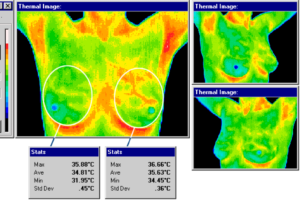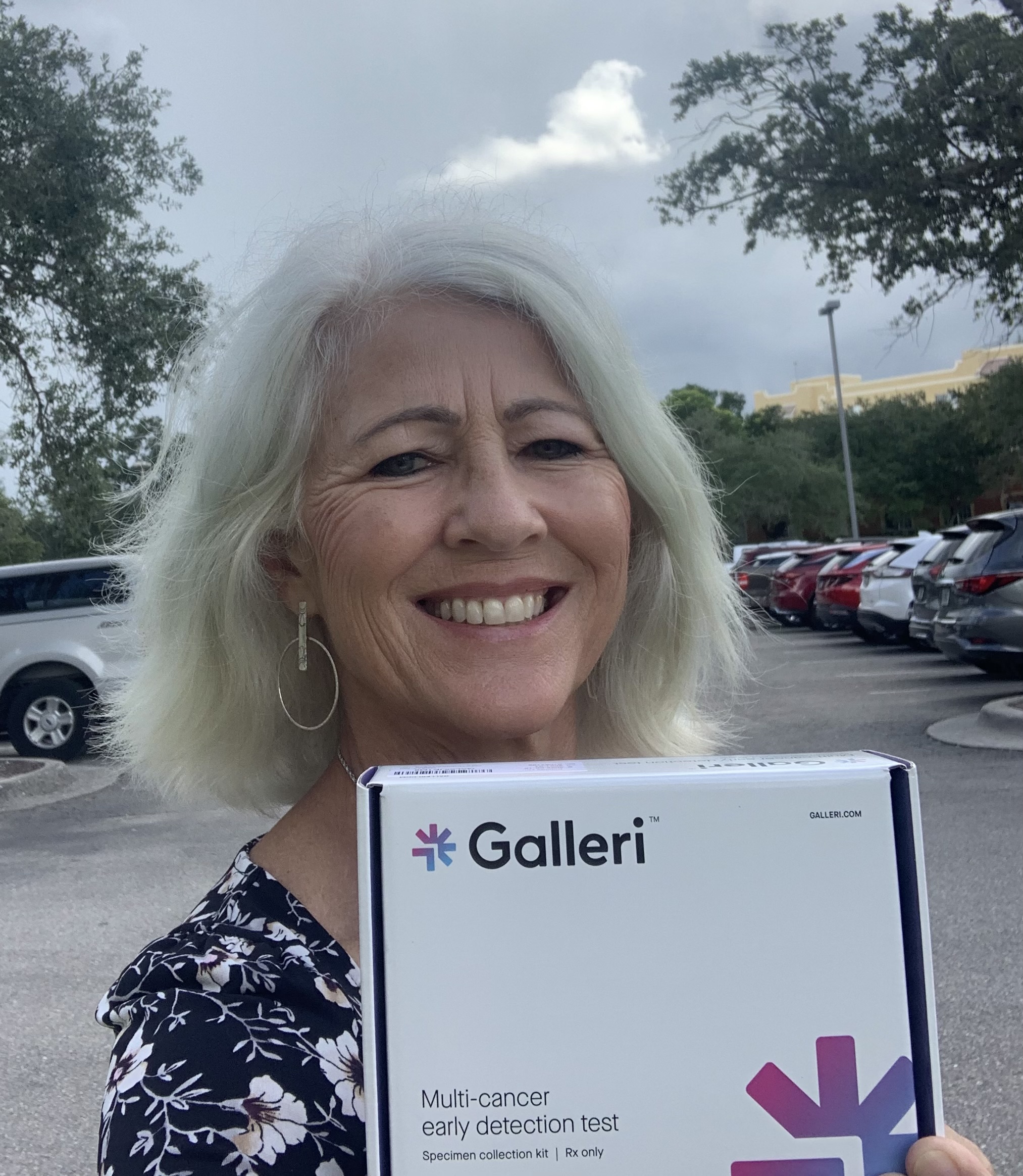One of the most often asked questions from my community is, “Other than mammograms, are there other tests that you recommend that support TRUE breast cancer prevention and very early detection?” In this blog, I will discuss the 5 most important tests for real breast cancer prevention.
The 5 Tests for Every Woman
First and foremost, do not guess when it comes to your health! I encourage you to work with an integrative functional doctor, naturopath, Chiropractor, or with one of our 7 Essentials Certified Coaches [1] who can walk you through the 7 Essentials System® [2] for breast health.
That being said, although there are many other tests that can be used to support breast health, here are 5 specific tests that I personally use to monitor my health.
#1 Thermography
First, let’s talk about what many experts say is the “gold standard” of alternative breast cancer screening technologies: thermography [3] or Digital Infrared Thermographic Imaging (DITI). No single tool can be 100% accurate, but I believe that thermography is one of the best non-invasive tests for very early detection. DITI demonstrates areas of heat in the breast area that can indicate inflammation and unhealthy hormonal patterns. Although DITI cannot diagnose cancer, it may detect the presence of breast cancer tumors 5 to eight years before a mammogram can. To learn more, check out this podcast episode [4] and blog post [5].
No single tool can be 100% accurate, but I believe that thermography is one of the best non-invasive tests for very early detection. DITI demonstrates areas of heat in the breast area that can indicate inflammation and unhealthy hormonal patterns. Although DITI cannot diagnose cancer, it may detect the presence of breast cancer tumors 5 to eight years before a mammogram can. To learn more, check out this podcast episode [4] and blog post [5].
According to the American Cancer Society, it may take up to 5-8 years for a tumor to be visible on a mammogram.
I recommend that most women on a healthy breast program get a thermography screening on a yearly basis. Contact the American College of Clinical Thermology for more information.
#2 Vitamin D
Vitamin D can “activate or deactivate” genes that will then have an effect on dozens of functions, including nutrient absorption, cell proliferation, and cancer growth or suppression. Most Americans suffer from low Vitamin D levels [6] because of sedentary indoor lifestyles and poor diets.
The Canadian Cancer Society [7] became inspired by a study that discovered a 60% reduction in cancer with the use of Vitamin D and now endorses the use of D in their country for preventing cancer. Don’t guess when it comes to YOUR levels [8]. A simple blood test or finger prick can measure your Vitamin D levels to let you know if you are deficient.
#3 Iodine

Iodine is “food” for the endocrine and reproductive systems, especially the thyroid. Unfortunately, certain chemical toxins such as fluoride and bromide block iodine absorption in the body. When this blockage happens, the receptors in the mammary area and in the thyroid area must “compete” for limited supplies. Lack of iodine may lead to breast cancer and other cancers because all glandular tissues (thyroid, breasts, ovaries, prostate, and colon) rely on healthy amounts of iodine [9] to function properly. For these reasons, I would encourage you to have your iodine levels checked with a simple 24-hour urine test. Learn how to get the test HERE [10] and what low levels of iodine have to do with breast cancer.
#4 Estrogen Methylation
Methylation is a process where hormones are metabolized and then broken down into other vital substances. Estrogen, for example, if properly methylated, should be broken down into the protective types of estrogens in the blood.
Poor methylation and liver clearance of the more aggressive estrogens may be contributing factors in the development of breast cancer, so taking positive measures to support this process is very important.
Your Estrogen Methylation pathways can be measured by a simple urine test. To learn more about estrogen methylation and how it may be affecting your health, please read this blog. [11]
#5 Galleri
Finally, for those of you who specifically want to know IF and WHERE you may have cancer, the Galleri test may be right for you. This test is a multi-cancer early detection test. By multi-cancer, they really mean it. The Galleri test scans for 50 types of cancer [12], many of which are not commonly screened for today. Just one quick and simple blood draw and you are good to go!
How does Galleri® test for cancer?
Every cell in your body releases DNA into your bloodstream when it dies. Cancer cells do the same thing. However, DNA from healthy and cancer cells looks different. This is why a blood sample can effectively screen for various types of cancers. The Galleri test looks for signals present in the blood that may be associated with various types of cancer.
The test must be ordered by a healthcare provider, and your results will be ready about two weeks after your blood draw. If cancer is detected, the next steps would be more screening and testing. This will help your medical team create a personalized treatment plan for you.
The Galleri test [12] is intended to detect a cancer signal and predict cancer signal origin to inform the diagnostic evaluation.
Who should take a Galleri® test?
This test is recommended for adults with an elevated risk of cancer. Risk factors include but are not limited to adults ages 50 and over. If anyone in your family has been diagnosed with cancer, if you live in a toxic environment and are not practicing healthy living, the Galleri test may be a good choice for you.
Please take a moment to learn more about this option via www.galleri.com [13].
So there you have it—the 5 most important tests for early breast cancer prevention! Practice true prevention by taking advantage of the technology that exists that can help you put a safe and effective healthy breast protocol [2] into place.